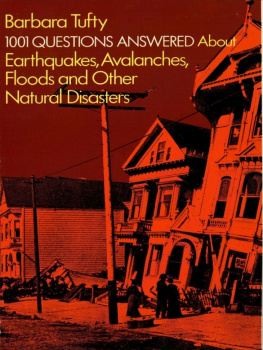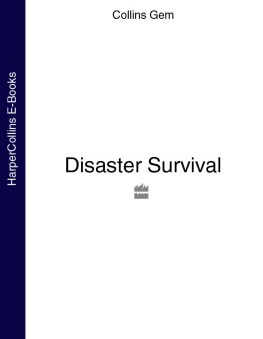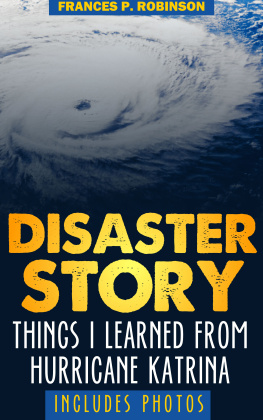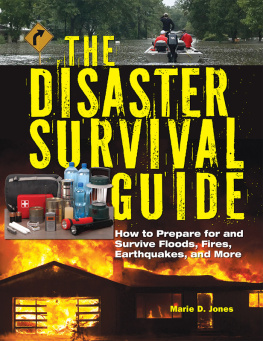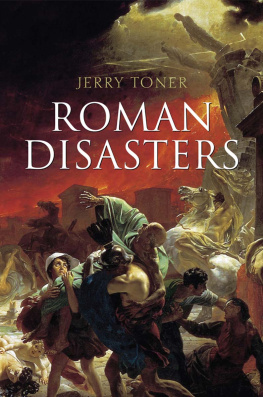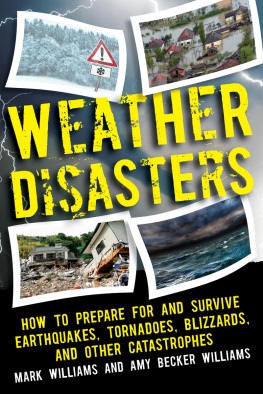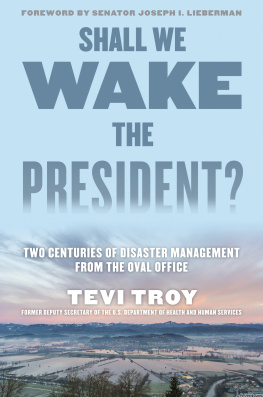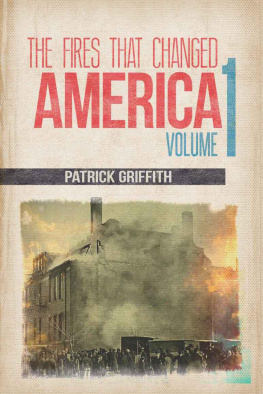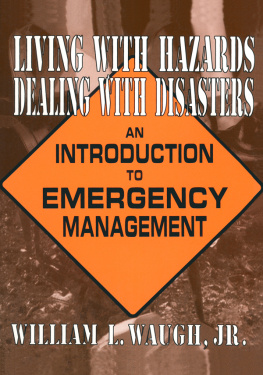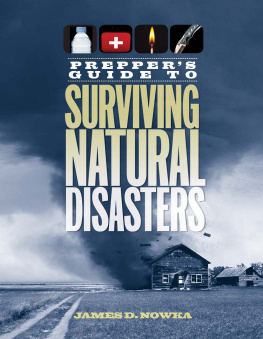THE DISASTER EXPERTS
The Disaster
Experts

MASTERING RISK
IN MODERN AMERICA
SCOTT GABRIEL KNOWLES

Philadelphia Copyright 2011 University of Pennsylvania Press
All rights reserved. Except for brief quotations used
for purposes of review or scholarly citation, none of this
book may be reproduced in any form by any means without
written permission from the publisher.
Published by
University of Pennsylvania Press
Philadelphia, Pennsylvania 19104-4112
www.upenn.edu/pennpress
Printed in the United States of America
on acid-free paper
10 9 8 7 6 5 4 3 2 1
Library of Congress Cataloging-in-Publication Data
ISBN 978-0-8122-4350-5
To Julia, patience expert...
CONTENTS

ABBREVIATIONS

ASCE | American Society of Civil Engineers |
BPAT | Building Performance Assessment Team |
CD | Civil Defense |
DCPA | Defense Civil Preparedness Administration |
DRC | Disaster Research Center (Ohio State University/University of Delaware) |
EMI | Emergency Management Institute |
FCDA | Federal Civil Defense Administration |
FEMA | Federal Emergency Management Agency |
HSC | House Science Committee |
NBFU | National Board of Fire Underwriters |
NBS | National Bureau of Standards |
NEHRP | National Earthquake Hazards Reduction Program |
NFIP | National Flood Insurance Program |
NFPA | National Fire Protection Association |
NGA | National Governors Association |
NIST | National Institute of Standards and Technology |
NSF | National Science Foundation |
NORC | National Opinion Research Center (University of Chicago) |
ODM | Office of Defense Mobilization |
UL | Underwriters Laboratories, Inc. |
INTRODUCTION

Here is an example of a steel structure subjected to the impacts of a fully loaded, fueled 747 airplane. With the lights dimmed in the hearing chamber, engineering professor Abolhassan Astaneh-Asl narrated a computer simulation for the House Science Committee. Here is the plane approaching that building at 450 miles per hour. Close up here, you can see the damage to the structures. In the front row sat Sally Regenhard, among the dozens of family members in the audience, clutching a portrait of her son Christian. A proby, a probationary firefighter still new to the job, he was covering for someone in Engine Company 279 on the morning of September 11. Christian Regenhard was one of the more than 1,100 victims of the World Trade Center attacks whose remains were never identified.
Officials from the Federal Emergency Management Agency (FEMA), the American Society of Civil Engineers (ASCE), and the National Institute of Standards and Technology (NIST) each offered in their testimony a rather different take on the investigation, stressing that they had been necessarily delayed early on by the imperatives of looking for victims. Lacking subpoena power had hampered evidence collection they conceded, but overall they were confident that their work would translate the tragedy into actionable steps for safer buildings, particularly through the work of the multi-disciplinary Building Performance Assessment Team (BPAT). The
In his turn before the Committee fire science professor Glenn Corbett blasted this cautious optimism, zeroing in on the fact that the World Trade Center steel had been sent awayto recycling yards in New Jersey, and as far away as Shanghaibefore experts could begin to examine it. The Building Performance Assessment Team is composed of an elite group of engineers and scientists, Corbett conceded. Nevertheless, they had allowed valuable evidence in the form of the towers structural steel to be destroyed. Committee chairman and New York Representative Sherwood Boehlert picked up on Corbetts line of argument. We need to understand a lot more about the behavior of skyscrapers and about fire if we are going to prevent future tragedies, he warned. In his view the investigation thus far had faced numerous obstacles, including a lack of coordination and a slowness to react, matched by a lack of initiative in gathering evidence and asserting investigative authority. No organized team was at the site for weeks. Potentially valuable evidence has been irretrievably lost, he worried. What this experience clearly points up, Boehlert concluded, is that the Federal Government needs to put in place standard investigative protocols and procedures right now so we dont have to reinvent the wheel each time we face a building failure.
Angry and frustrated in his attempts to understand exactly who among the experts was in control, New York Representative Anthony Weiner asked a seemingly simple question. Will the person who is in charge of the investigation raise their hand? Two hands went up, and then a third. I want to know who is in charge, Weiner demanded. Where does the buck stop... on this investigation? Bement replied.
Here before the House Science Committee were the disaster expertsspecialists in predicting the unpredictable and managing the unmanageableworking at the cutting-edge of fire protection, engineering, and emergency management. Disagreements over the technical details of a complex investigation could be expected, even heralded as evidence of a self-critical and scientific process. But, the brief and honest exchange between Arden Bement and Anthony Weiner revealed a more deeply unsettling and mostly obscured feature of life in the modern technological age. When it comes to mastering risk, knowledge is usually not the problem. In the case of the World Trade Center disaster, what began as a technical investigation had turned into a bureaucratic soul-search, and a lament for the failure of the experts to transform their knowledge into action.
When it did appear in May, the BPATs World Trade Center Performance Study took pains to point out the seemingly remarkable fact that each building had withstood the impact of a collision with a commercial jet. In fact it is fair to speculate based on reading the Performance Study that the buildings might have stood, albeit in shambles, had the fire and emergency systems performed effectively. But, they had not, and what followed was a grim tale of failure. The fireproofing material surrounding the structural columns and beams was of little use, swept away by airplane fuselage tearing through the buildings. Jet fuel ignited infernos on multiple floors, burning hot enough to weaken the steel, particularly the light bar truss members supporting each floor. Emergency exits, elevators, and communications systems were overtaxed almost immediately, and failing to perform as designed they placed first responders in added danger and thwarted the evacuation effort.
Next page

